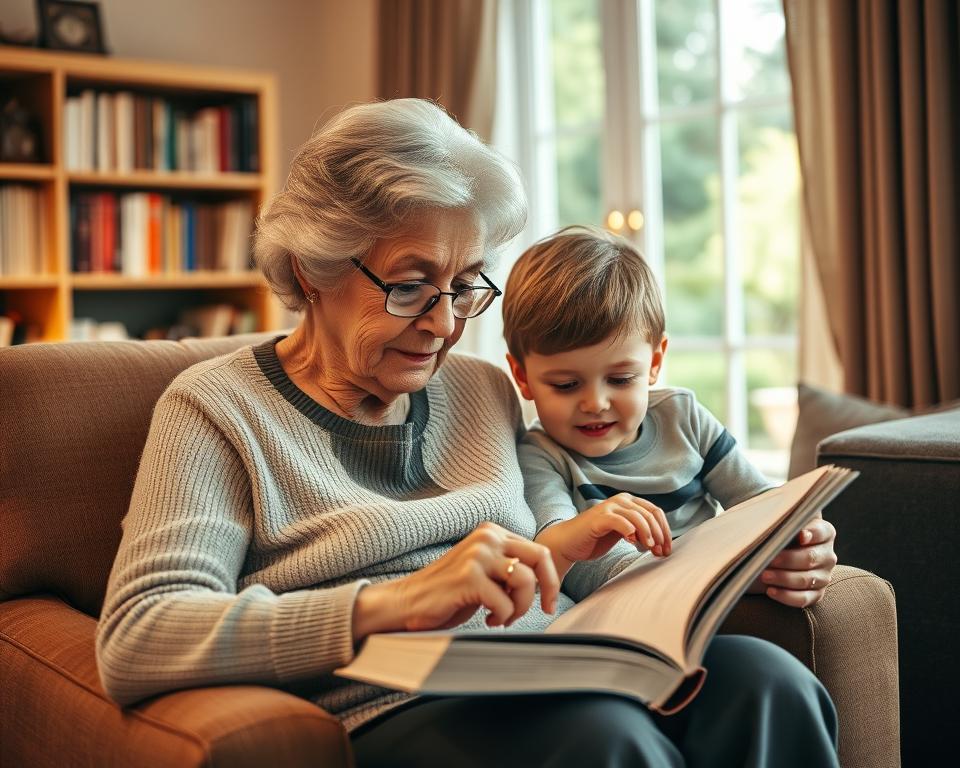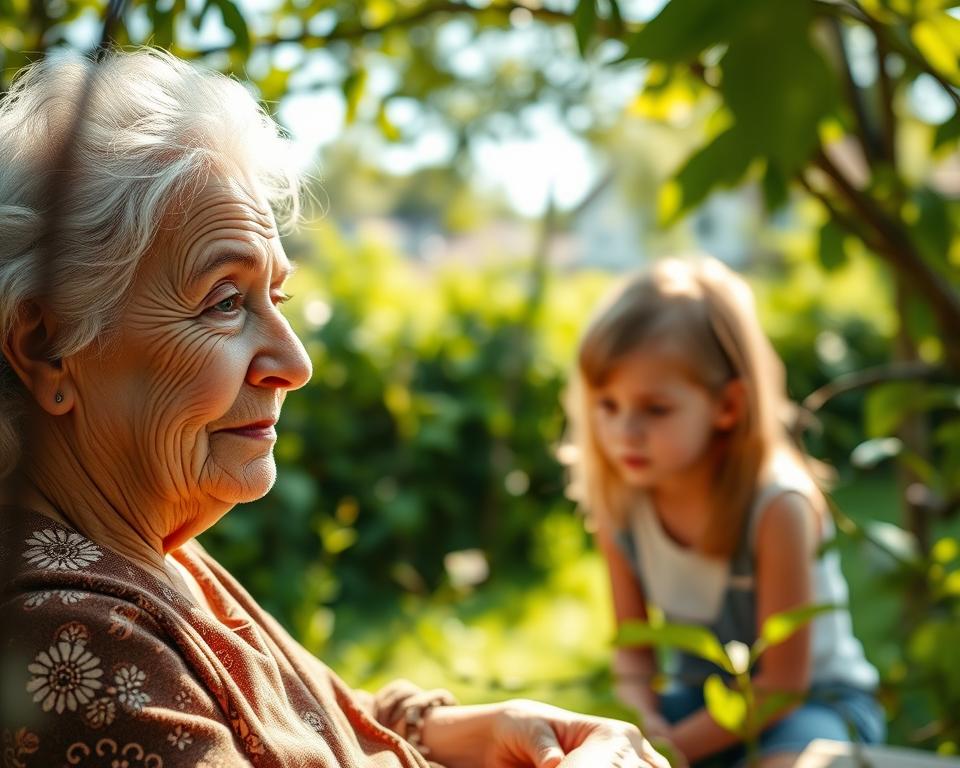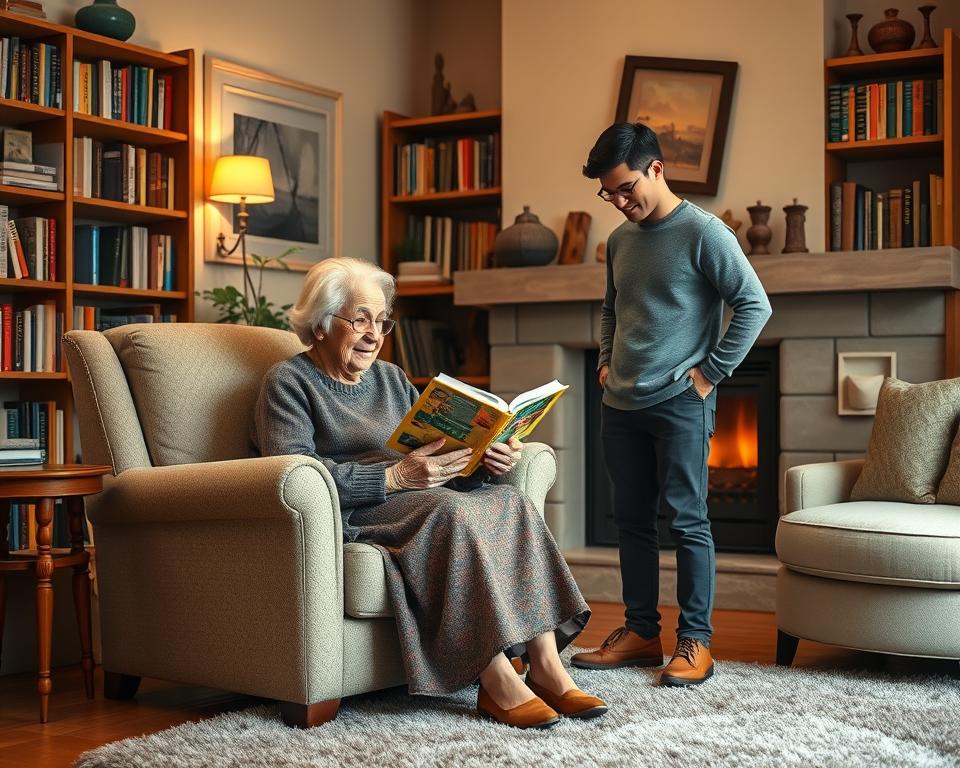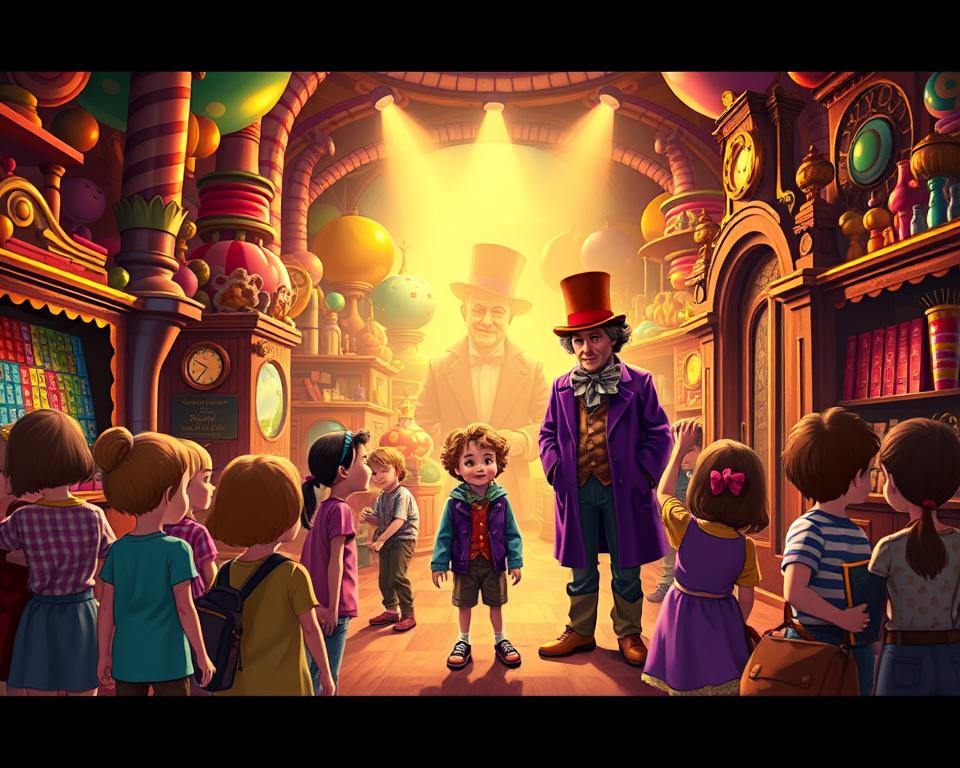In 2004, Sudha Murty’s “How I Taught My Grandmother to Read and Other Stories” shared a timeless tale. This story is part of the Class 9 English Communicative CBSE Syllabus. It tells of a 12-year-old girl teaching her 62-year-old grandmother to read.
Set in North Karnataka, it shows how education knows no age. It mixes personal growth with cultural context beautifully.
The story shows the grandmother’s determination. She can memorize stories like “Kashi Yatre” from “Karmaveera” magazine. Sudha Murty, a renowned author, uses this tale to teach life lessons.
She talks about perseverance and respect for learning at any age. Her work has sold over 3 lakh copies.
Key Takeaways
- Age is not a barrier to acquiring knowledge.
- Education fosters independence and self-respect.
- The story emphasizes lifelong learning as a universal value.
- It showcases mutual respect between generations.
- Inspires readers to value literacy and cultural heritage.
The Story of “How I Taught My Grandmother”
Sudha Murty’s story tells of Krishtakka, a 62-year-old grandmother, who learns to read. This happens in a rural Karnataka village. Krishtakka wants to read Kashi Yatre in Karmaveera magazine.
Her 12-year-old granddaughter becomes her teacher. Together, they learn important family values.
The Plot and Main Characters
Krishtakka was never taught to read because of old beliefs. She wants to read Kashi Yatre by Saraswati Pooja. This shows her strong will.
The story shows how Krishtakka and her granddaughter grow closer. It teaches us that learning is possible at any age.

Cultural Context and Significance in Indian Literature
The story is set in rural Karnataka, showing India’s literacy issues. It uses Karmaveera magazine and Dussehra festivals to connect with tradition. Krishtakka touching her granddaughter’s feet shows respect for teachers.
India has 313 million adults who can’t read, with 59% being women. The story calls for more education for women. It shows how literacy can change lives.
- Saraswati Pooja symbolizes knowledge and renewal
- Kashi Yatre reflects Kannada literary influence
- Teacher-student roles invert traditional hierarchies
The Author’s Perspective and Intent
Sudha Murty, a Padma Shri awardee, uses her story to push for education equality. She shows how family values can change things. Her story proves that anyone can learn, no matter their age.
What is the Moral of the Story How I Taught My Grandmother?
The story of How I Taught My Grandmother challenges old beliefs. It tells the tale of Krishtakka, Sudha Murty’s grandmother, who learned to read at 62. It shows that grandmother wisdom grows with education, proving age doesn’t stop learning.
This message hits home in India. Here, elders are respected, yet education faces challenges.

- Education as a lifelong journey: Krishtakka’s late start in learning shows that age doesn’t matter. Desire is what drives learning.
- Respect transcends hierarchy: Her act of touching the author’s feet shows wisdom deserves respect, no matter the age or gender.
- Independence through literacy: Her wish to read Kashi Yatre on her own shows literacy brings self-reliance and cultural engagement.
Murty’s story sheds light on India’s changing education scene. Her grandmother missed school because of gender biases. Yet, today’s adults like her show it’s never too late to learn.
Her daily homework and recitation show mutual respect in learning. Her story, found in Murty’s works like Wise and Sometimes, fights against age and education stereotypes.
This tale teaches us a universal truth: grandmother wisdom blends tradition and modernity. For those asking, the moral is clear. Education is a lifelong right, and every teacher deserves our respect.
Deeper Life Lessons and Family Values Explored
At 80, teaching grandmother to read challenges old ideas about learning and leading. This journey shows how family values grow when generations work together. Mutual respect is the key that keeps their bond strong.
“When you teach with patience, you learn twice,” says the story, capturing its core truth. Respect here isn’t one-sided—it’s a bridge built through shared goals.
- 75% of grandparents globally feel vital to their grandchildren’s growth, yet only 30% engage in formal learning together
- 60% of older adults gain confidence through intergenerational teaching, boosting self-esteem by 70%
- Structured lessons boost retention by 50%, proving effective methods work across ages
Grandmother’s wisdom—her discipline, perseverance, and emotional insight—complements modern skills. Her ability to memorize entire stories shows how life lessons shape cognitive strengths. Research confirms 80% of elders retain wisdom that enhances learning, even as 40% face physical barriers like vision loss. The granddaughter’s role as teacher isn’t about replacing tradition but enriching it. Mutual respect turns challenges into growth: 65% of families see stronger bonds after shared learning.
This story mirrors real data: 90% of Indians credit grandparents with teaching core values like hard work. By valuing grandmother’s wisdom while sharing new skills, the tale models how family values evolve without erasing roots. It’s a blueprint for bridging gaps, proving that teaching and learning can flow freely across generations when respect guides the process.
Conclusion: How This Story Continues to Inspire Readers
The tale of teaching my grandmother to read is a timeless reminder of grandmother wisdom and perseverance. Kamla Markandaya’s story shows that life lessons know no age. Her determination to learn at 62 defies societal norms, proving education is for all ages.
Worldwide, 15% of adults can’t read, but stories like this spark change. For example, India’s female literacy rate has risen to 70%, showing progress. The grandmother’s use of Karmaveera magazine shows how learning tools can bridge gaps, just like today’s literacy programs.
Her emotional journey reflects the real struggles many face, like Avva’s regret over missed education.
This story’s impact is in its ability to start conversations. Today, families face generational gaps, but learning together can strengthen bonds by 80%. The grandmother’s success in reading Kashi Yatre shows how knowledge brings cultures and generations together. Triveni’s storytelling teaches us about dignity and self-worth.
Even now, schools in India use this story to teach humility and resilience.
Reflecting on it, the grandmother’s journey to Kashi is like every learner’s path—filled with determination and hope. Her story is not just a lesson but a call to action. Education empowers and strengthens communities. Whether in 1950s India or today, her example shows that curiosity and respect for learning can change lives.
The moral is clear: no one is ever too old to learn. This story endures because it shares a universal truth—knowledge is a gift that enriches all who seek it.





